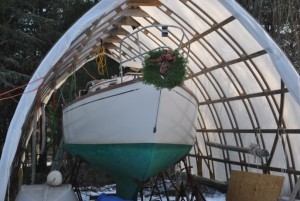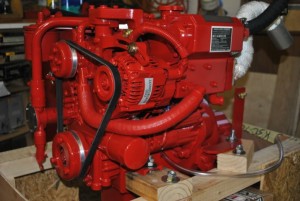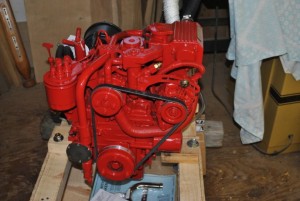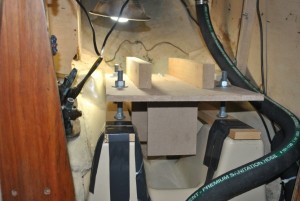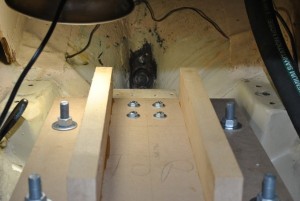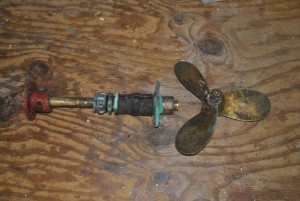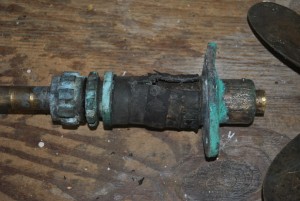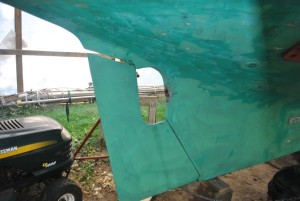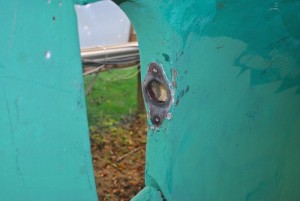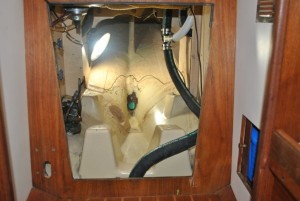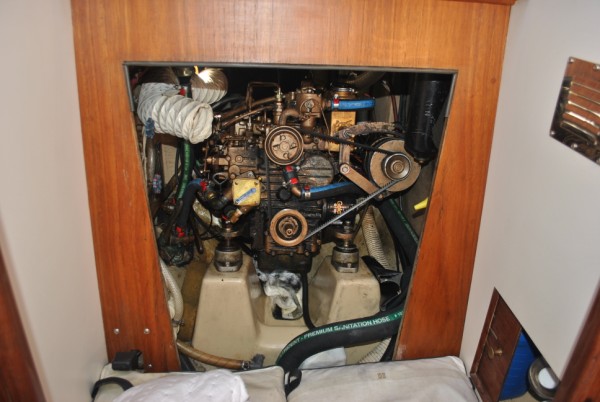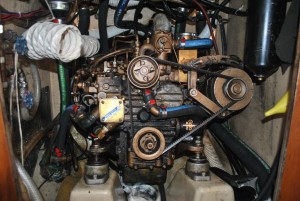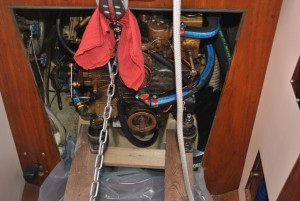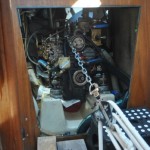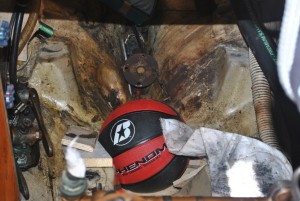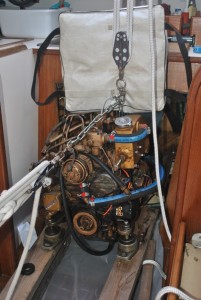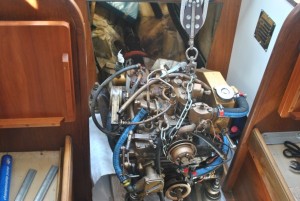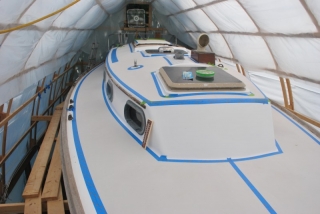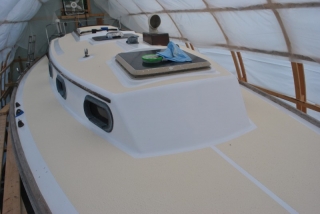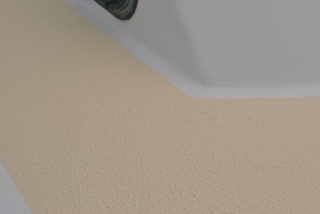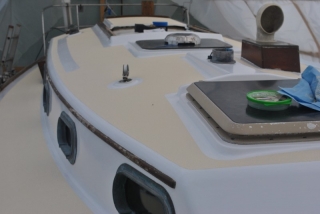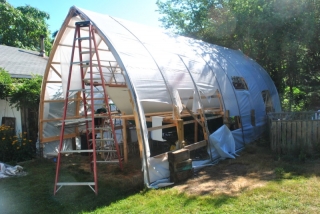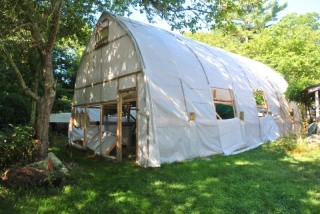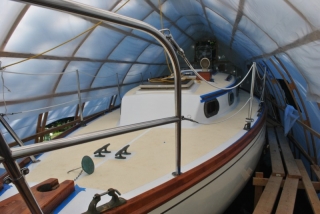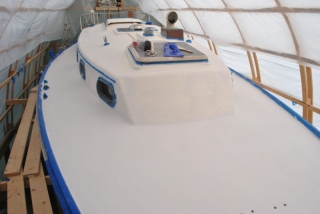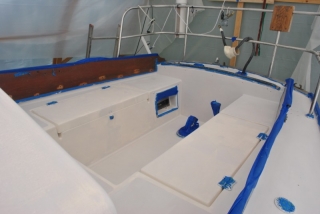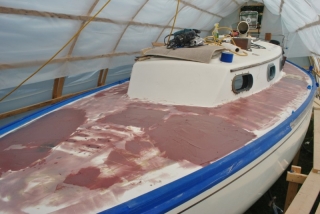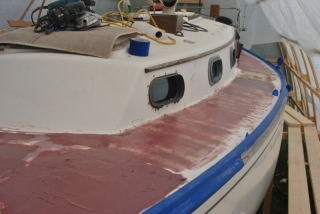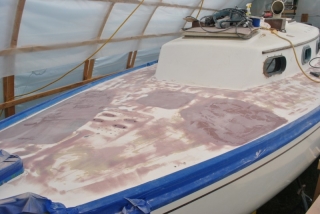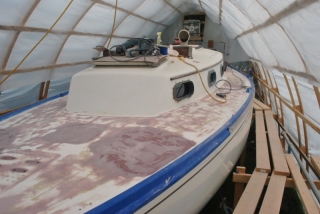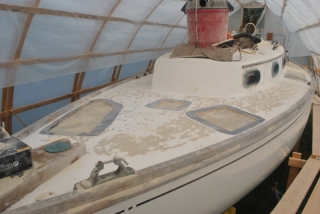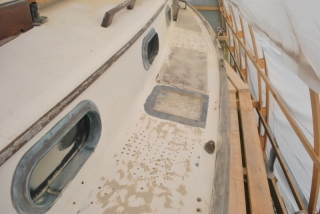After a lot of work there is light at the end of the tunnel. I have scheduled Catalpa’s launch for next Wednesday, July 25. We’ve been working diligently to complete as much as we can before splash day. Frequently temperatures in the shed are well over 100 degrees so I’m generally up at 5:00am working. I put a thermometer up on deck and it reached 109 a few days ago. HOT!
After the primer was completed I again sanded the boat and applied 4 coats of System 3 LPU paint. The paint job is not perfect. There are some brush marks and bugs but in general, I’m happy with it.
The paint seems very hard and durable so I feel it will last a long time. This paint was applied to all of the areas that don’t get non-skid paint (SKID?). So the skid is a shiny white.
After this was completed I re-taped for non-skid. For this I used a product called Kiwi-Grip.
This is a water based product that goes on very thick with a notched trowel and is then rolled out with a special roller. I’m pretty impressed with how it came out.
The only problem I’ve had is that it seemed to have taken a long time to completely dry. Therefore, some of it got a little dinged up in the work that followed. If it needs it, I’ll roll on another coat next winter. I like the texture and color. I hope it holds up well.
My poor shed is going to pieces. I’ve cut many holes in it to try to vent out some of the heat. The other day I ripped
the whole front wall off. It’s done its job and held up really well through windy days and winter squalls. I’ve enjoyed having a huge hangar to work on my boat in but it will be nice to get the yard back.
We’ve re-bedded most of the hardware that was removed from the deck. Now I’m just checking a bunch of small stuff off of the list. The one additional large job that I decided to add was stripping and redoing the teak. I’ve got 2 coats of “Cetol Marine” down and one or two more before launch day. Normally, I use Epifanes Varnish but I decided to try something new. In the past Cetol always
looked a bit too orange to me but this is their natural teak formulation. It’s more of a light brown tint.
I can’t wait to get out on the water.

